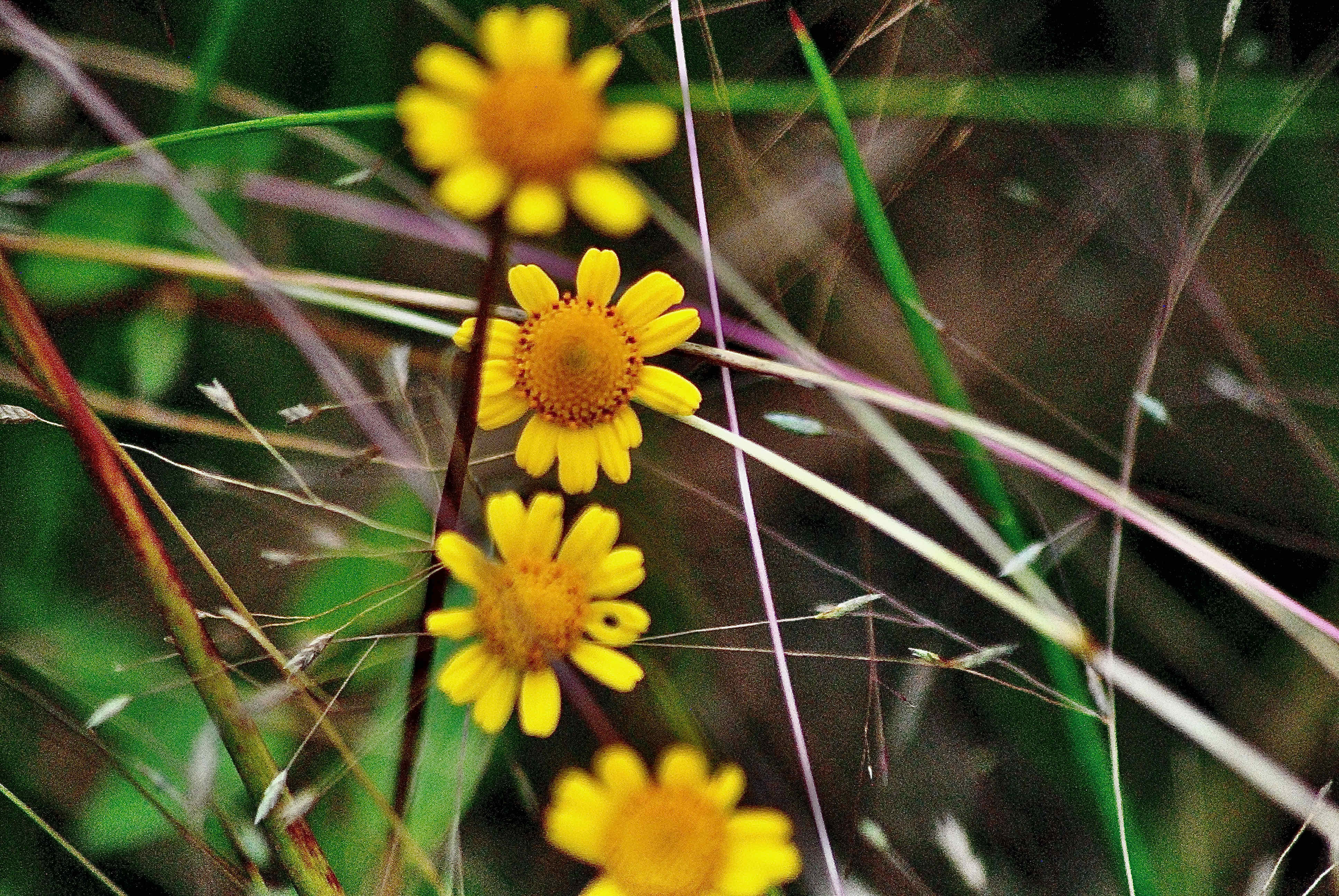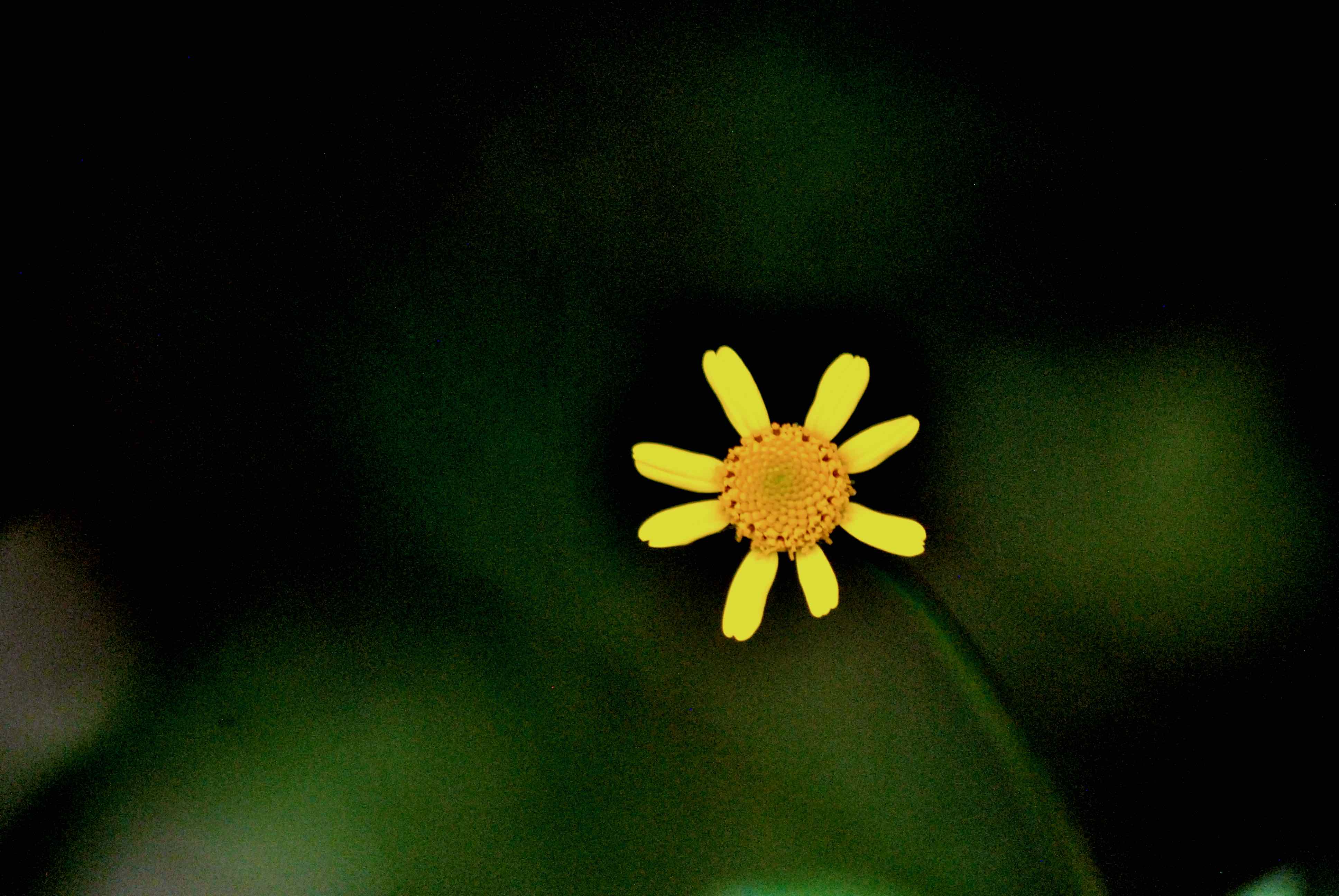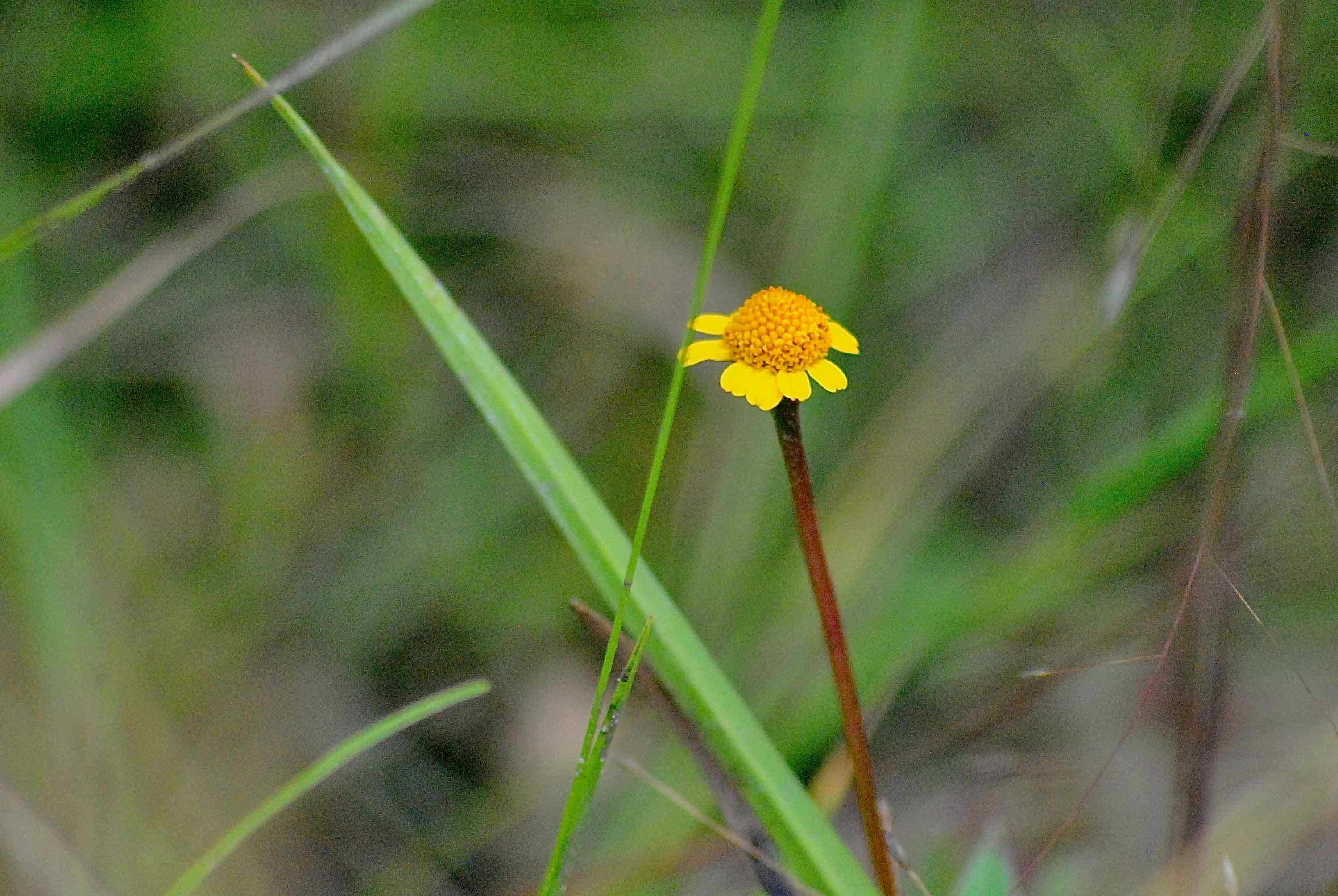
Oppositeleaf spotflower, photographed at Florida Panther National Wildlife Refuge, Immokalee, Collier County, in October 2015.
Oppositeleaf spotflower. It’s a descriptively accurate enough, as names go, but a little unromantic for a plant with such an attractive bloom.
The leaves are arranged opposite each other along the stem, and if you look closely enough, you’ll see the spots on the flower. Oppositeleaf spotflower, Acmella oppositifolia var. repens in scientific terms. As we said, descriptively accurate.
It’s a Florida native, but a rare one, at least in our end of the Peninsula, according to the Institute for Regional Conservation in Delray Beach. Its range includes most of Florida, but it is absent from the counties north and east of Lake Okeechobee, including Palm Beach and Martin counties. It’s found throughout the Southeast, as far north as North Carolina and Tennessee and west into Missouri and Texas. It’s consider “of special concern” in Tennessee, where it’s known as creeping spotflower.
It’s also found in Mexico, Central America, South America and Japan. Yes, Japan. By act of the Japan’s Diet — their legislative body — oppositeleaf spotflower is consider an invasive in the Land of the Rising Sun. Seriously.
Oppositeleaf spotflower likes moist habitats, river banks, pond edges, ditches and the like. It’s a sprawling plant no more than a foot tall, and rarely reaching that. Where its stem touches the ground, the plant will root.
Leaves are simple, dark green and glossy, arranged opposite each other, as noted in the name, and the edges are serrated, or toothed. The stems are red.
The flowers have between five and 20 yellow rays surrounding an orange disc. They bloom July through November in northern portions of its range, year-round in more southerly places, such as Florida.
It is cultivated and used as a ground cover along the edges of ponds and lakes.
It is a member of Asteraceae, the sunflower family.
One quick taxonomic note: do any research on this plant and you’ll see references using Acmella repens (the Flora of North America page linked below uses it) or Spilanthes americana scientific names for oppositeleaf spotflower. Both are older names that are no longer accepted in the scientific community.



